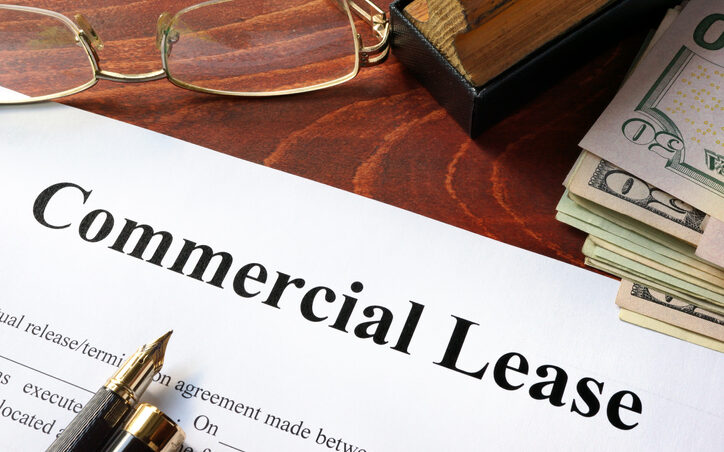You will come across many clauses in your commercial lease agreement that have been prepared by the Landlord. There is more to consider than just price, rent abatement and tenant improvement allowance (TIA) including security deposit requirements restrictions on how you use the property, and who will pay for maintenance of the property and capital improvement. Before you actually engage a landlord to start negotiate a lease you’ll want to write down your “Nonnegotiable items”
• Amount of the rent. Know what your rent includes and does not include. There are different costs absorbed and assigned by the tenant and landlord depending if you are in a Triple Net (NNN) lease, Modified Gross lease or Full Service lease. For example in a triple net lease you will be responsible on a pro-rata basis the taxes, insurance, and maintenance above the base rent in most cases this can be between $4.00-$7.00 PSF.
• Size of the space you need. knowing the difference between usable and rentable square feet and how the landlord measures this. If you’re going to pay all or part of the landlord’s real property taxes, its important that the commercial lease agreement specify that you’ll pay according to your percentage of the property’s total rentable space.
Usable square footage
Is the actual space you occupy from wall to wall. Usable square footage does not include common areas of a building such as lobbies, restrooms, stairwells, storage rooms, and shared hallways. For tenants leasing an entire floor or several floors, the usable square footage would include the hallways and restrooms exclusively serving their floor(s)
Rentable square footage
is your usable square footage PLUS a portion of the building’s shared space. As mentioned above, shared space can be anything that is outside of your occupied space and is of benefit to you (lobbies, restrooms, hallways, etc). As a tenant in a commercial space, you pay for a portion of the shared space and thus your monthly rent is always calculated on RSF.
Calculating the load factor is pretty straightforward. First, find out how much total floor area a building has then subtract the shared square footage to determine the usable square footage. The owner or owner’s agent should be able to give you these numbers. Then divide the total floor space by the USF to get the load factor.
If you pay according to the total space that happens to be rented at the time, you can end up paying an enormous portion of the tax bill if there are significant vacancies in the building. When I represent tenants in commercial lease negotiations a good operating and expense clause I like to use is:
Tenant shall pay its pro-rata share of increases in operating expenses and real estate taxes that exceed the expense stop. If the building is less than 95% occupied, expenses shall be grossed up to reflect 95% building occupancy.
Another clause is:
Base Year 2019, grossed up to reflect 95% occupancy. Request copies of the actual operating Expenses for the previous year and what is budgeted for the current. To control your Increases in operating expenses request a five percent cap on controllable operating expenses
Length of the commercial lease agreement
You may be looking for a long or short term lease. Factors such as the age and stability of your business and plans for growth, the nature of your work and the changes you’ll expect your company to go through will affect your decision. The “term” of your lease means it’s length in time in consecutive months to even years. There are many factors that can dictate what you negotiate in your lease, your financial and credit worthiness as a tenant, market conditions etc. In commercial leasing it is expected that a “normal “ lease term is anywhere between 3-5 years in length. You may be able to get out of a long term lease by turning over your rental to another tenant by subleasing or assigning your lease. If you’re uncomfortable with a lease longer that a year, but the landlord is looking for a tenant to sign up for five years, the deal may not be workable. Is there a reasonable likelihood that the landlord will agree to a shorter term? It will depend on current conditions in the real estate market. Like many other issues in lease negotiations, the landlord’s willingness to bend a bit may depend on whether you’re the only tenant looking or if there are a handful of tenants that are looking at the same space. In a tight market such as today it tends to be a Landlords market where little if any concessions are made on short term leases.
Lease Options
The landlord’s willingness to let you extend the lease or expand into additional space in the future. When you negotiate a lease, chances are you’re not focusing much on what will happen at the end of the lease. It’s worthwhile, however, to give the matter some attention now. If your business does well and the location continues to be suitable, you may want to stay another three, five or even ten years. You have to ask yourself , “If you see yourself outgrowing the current space in three to five years”. You may also consider a “first right to expand” clause giving you the ability to grow without actually moving again. Keep in mind the landlord may legally not able to give you an option to expand for example, other tenants in the building may have options on the space you’ll be renting once your lease expires, you’ll want to know this up front. The idea to have options in your lease is to give you flexibility should you include the ability to renew your lease under the same or similar rental terms. If you like the setup and the location is convenient, and especially if your business depends on the surrounding area you may want to avoid the expense and work of relocating, especially if you put a lot of improvements into the space. When you are just starting out you can’t know for sure how you’ll feel when the lease term ends. An option to renew your lease is the best way to hedge your bets. From the landlord’s point of view, however, option to review clauses are not desirable because the landlord won’t know your intentions until well into the future and often times you’ll have a “notice period” to let the landlord know in advance if you would like to exercise your option.
Renovations
Who pays to fix up your space and makes the improvements you want? If you want to have the space customized to your specifications, you’ll may want to hire a space planner, architect or contractor exactly what needs to be done and what it’s likely to costs. There are many ways the landlords and tenants can split the responsibility and costs of renovations and how to negotiate the best deal. If the expense is significant to you, you’ll want to learn if the landlord is amenable to paying for some or all of this work. If the landlord isn’t willing to pay for renovations you may decide that the other items of the deal are so good that you can afford to arrange and pay for the renovations yourself. When I consult with a tenant one of the first things I ask them is, What is important to you? Size, location, rent abatement, lease rate or tenant improvement allowance? If its an established business maybe rent abatement is not as important as tenant improvement allowance, or if it’s a start up company rent abatement tends to be more important that tenant improvement allowance. The most common way for landlords and tenants to allocate the expense of improving commercial space is for the landlord to give you what is knows as a tenant improvement allowance (TIA) this often is a price per square foot rate up to a maximum amount, any cost above this (TIA) is the responsibility of the tenant to pay for or the landlord amortizes that amount over the lease term. Here is some quick math to determine the Landlord Tenant improvement contribution.
Lets say the cost of the TIA is $63,000. You divide that amount by the square footage of the space you are occupying let’s assume 1671 SF = $37.70 PSF. (The landlord contribution is $10.00 PSF). Your remaining balance is $27.70 PSF. Divide that $27.70 by the lease term lets say 5 years, that equals $5.54 this is the amount per square foot that is added to your initial base rent and amortized over the lease term.
Here are some of questions to consider when reviewing your commercial lease agreement:
• What you pay in rent
• What other expenses you pay
• How your rent changes over time
• When you move in
• How long you can stay in the space
• Your ability to assign the lease or sublet the space
• Your rights and obligations when the lease is running
• Your landlord’s rights and obligations
• Your rights and obligations when the lease expires
• What your landlord is throwing in for free
Investing In Commercial Real Estate?
Looking to invest in Arizona Commercial Real Estate? At ICRE Investment Team, we work with commercial investors, property owners, companies, banks, and commercial loan servicers seeking the highest quality of services in the greater Phoenix, Scottsdale, Mesa and Tempe Arizona regions. Contact us for more information.
















